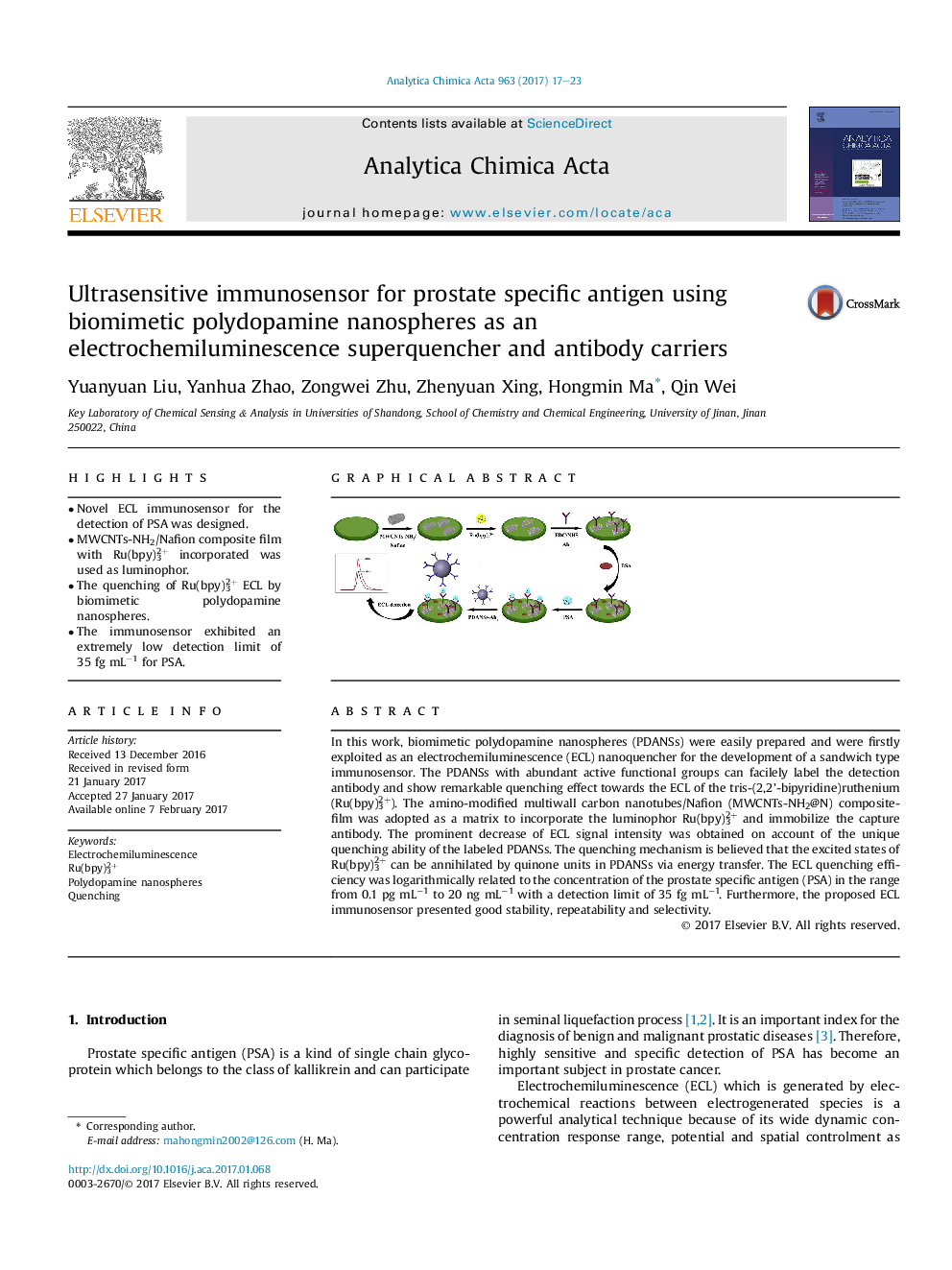| Article ID | Journal | Published Year | Pages | File Type |
|---|---|---|---|---|
| 5130911 | Analytica Chimica Acta | 2017 | 7 Pages |
â¢Novel ECL immunosensor for the detection of PSA was designed.â¢MWCNTs-NH2/Nafion composite film with Ru(bpy)32+ incorporated was used as luminophor.â¢The quenching of Ru(bpy)32+ ECL by biomimetic polydopamine nanospheres.â¢The immunosensor exhibited an extremely low detection limit of 35 fg mLâ1 for PSA.
In this work, biomimetic polydopamine nanospheres (PDANSs) were easily prepared and were firstly exploited as an electrochemiluminescence (ECL) nanoquencher for the development of a sandwich type immunosensor. The PDANSs with abundant active functional groups can facilely label the detection antibody and show remarkable quenching effect towards the ECL of the tris-(2,2'-bipyridine)ruthenium (Ru(bpy)32+). The amino-modified multiwall carbon nanotubes/Nafion (MWCNTs-NH2@N) composite-film was adopted as a matrix to incorporate the luminophor Ru(bpy)32+ and immobilize the capture antibody. The prominent decrease of ECL signal intensity was obtained on account of the unique quenching ability of the labeled PDANSs. The quenching mechanism is believed that the excited states of Ru(bpy)32+ can be annihilated by quinone units in PDANSs via energy transfer. The ECL quenching efficiency was logarithmically related to the concentration of the prostate specific antigen (PSA) in the range from 0.1 pg mLâ1 to 20 ng mLâ1 with a detection limit of 35 fg mLâ1. Furthermore, the proposed ECL immunosensor presented good stability, repeatability and selectivity.
Graphical abstractDownload high-res image (310KB)Download full-size image
